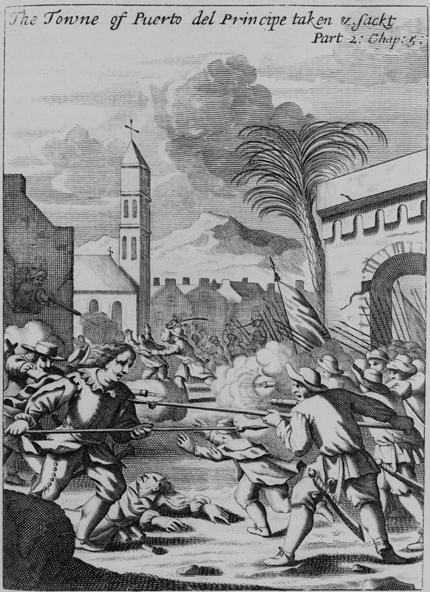One of the Most Successful Pirates of All Time
Sir Henry Morgan was a famous Caribbean pirate and privateer. He was one of the most successful pirates of all time. Although very little is known about Morgan's early life, he was supposedly born in 1635. Sometime in the 1650's, Morgan made his way to Jamaica, where his uncle was lieutenant governor. He soon married his uncle's daughter and began a career at sea.
Plundering in Panama, Cuba, and Venezuela
In 1667, Morgan was commissioned by the governor of Jamaica to capture Spanish prisoners in Cuba to learn details of a possible attack planned on Jamaica. With ten ships and over 500 men, Morgan first sailed to Cuba and destroyed the town of Puerto Principe. Morgan then sailed to Panama, where he captured the fortified town of Portobelo. Morgan and his crew only agreed to leave Portobelo, and spare the city from incineration, after the governor offered them a large ransom. Morgan and his crew next sailed to their headquarters in Port Royal, Jamaica, where they celebrated. Morgan's exploits earned him the respect and trust of Jamaica's governor, who subsequently sent him on plundering missions again to Cuba and then to Venezuela. Morgan next planned an attack on the isthmus of Panama.
 |
Morgan's Attack on Puerto Principe |
Looting Panama
On December 15, 1670, Morgan and over 1,400 soldiers attacked and occupied Santa Catalina Island off the coast of Nicaragua before reaching Panama. On December 27, after a long battle in which 300 Spaniards were killed, Morgan and his men took Chagres Castle and then planned a major attack on Panama. On January 18, 1671, Morgan split his forces in two and routed roughly 1,500 poorly trained Spanish soldiers stationed in Panama. Morgan and his men left Panama with over 100,000 pounds of stolen goods and treasures before burning Panama City to the ground. Residents of the city were tortured until they revealed the locations of more treasure. In 1674, the King of England knighted Henry Morgan for his service to the crown. He then returned to Jamaica and became the island's Lieutenant Governor, a post he served for nine years before being suspended in 1683. Morgan died in 1688, possibly of tuberculosis or liver cirrhosis.
Legacy
Sir Henry Morgan has remained prominent in popular culture well after his death. He is memorialized on the labels of bottles of Captain Morgan's Spiced Rum. In 1926, the famous author John Steinbeck wrote A Cup of Gold, a fictional account of Morgan's life. It was Steinbeck's first novel. Morgan's life was again dramatized in Josephine Tey's 1952 novel The Privateer.